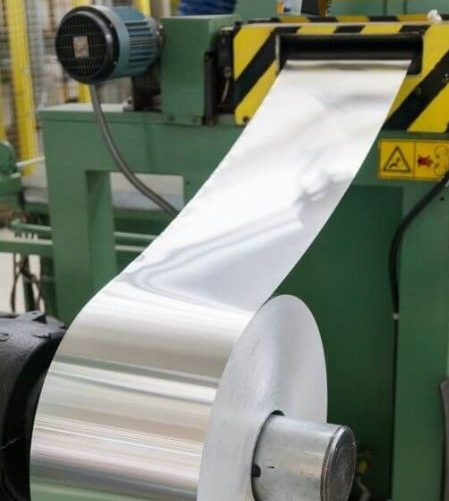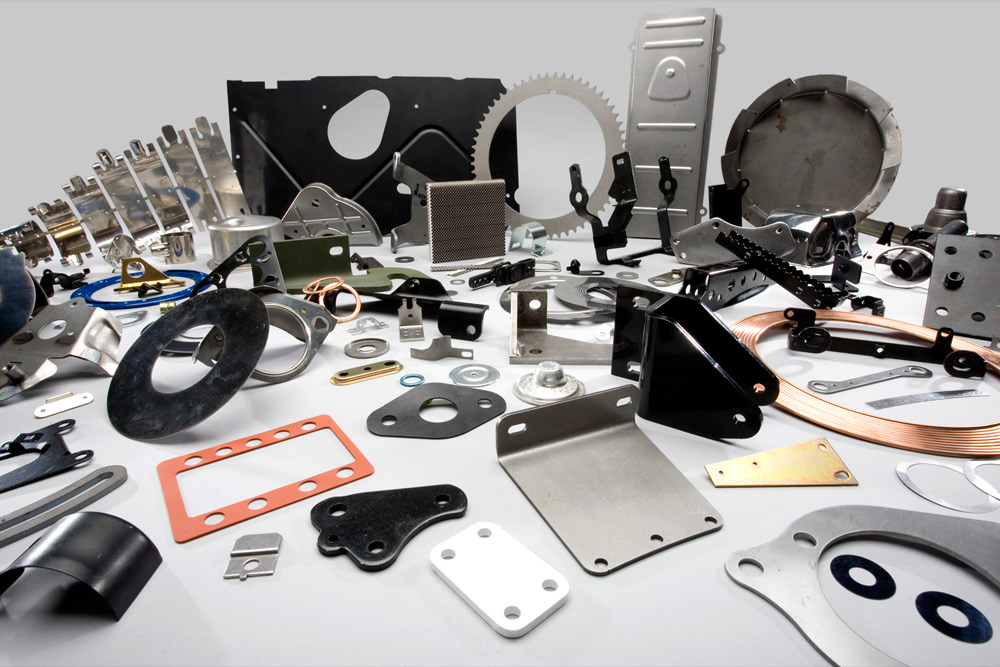Metal Stamping: Advancements Driving Industry Development
Metal Stamping: Advancements Driving Industry Development
Blog Article
Steel Stamping Innovations: Elevating Production Processes for Superior Results
In the realm of making procedures, metal stamping has long been a keystone technique for producing a range of accuracy elements. With the ruthless march of technical innovation, the landscape of steel stamping is undergoing a significant makeover.
Advancement of Metal Marking Methods

Furthermore, advancements in material scientific research have resulted in the development of high-strength alloys that can currently be flawlessly marked into elaborate shapes, dealing with a broader series of industrial applications. The integration of robotics and expert system has even more maximized the marking procedure by enhancing rate and precision while minimizing the danger of human error.

Effect of Advanced Products
Have advanced materials changed steel marking processes dramatically in the production industry? The answer is an unquestionable yes (Metal Stamping). The combination of innovative products has transformed metal marking, enabling makers to achieve higher precision, raised efficiency, and enhanced product top quality. By using products such as high-strength alloys, advanced composites, and ingenious finishes, metal marking processes can now produce components that are lighter, stronger, and extra durable than ever.
These innovative materials offer superior mechanical properties, deterioration resistance, and thermal security, permitting manufacturers to satisfy the demands of modern-day markets such as aerospace, automobile, and electronics. Furthermore, using sophisticated products in metal marking has facilitated the production of complicated geometries and elaborate designs that were previously unattainable via typical techniques.
Furthermore, the application of advanced materials has brought about reduced product waste, lower production prices, and shorter preparations, making steel marking procedures extra economical and lasting. As technology remains to advancement, the influence of advanced materials on metal stamping processes is anticipated to drive more innovation and improve the competition of makers in the worldwide market.
Automation in Steel Stamping
The advancement of metal stamping procedures driven by the combination of advanced materials has established the phase for substantial advancements in automation within the production sector. Automation in metal stamping has transformed production processes, enhancing efficiency, accuracy, and total output top quality. Via the application of robotics, sensors, and computer-controlled systems, jobs that were taxing and once hands-on can now be implemented with unmatched speed and precision.
Automation in steel marking not just accelerates manufacturing rates but additionally ensures consistency in the manufacturing procedure. By lessening human intervention, the danger of mistakes is significantly lowered, resulting in greater degrees of item uniformity and integrity. In addition, automation makes it view website possible for makers to undertake intricate marking jobs that would certainly be impractical or tough to accomplish by hand.
Moreover, automation in steel stamping adds to a more secure working atmosphere by decreasing the need for workers to take part in repetitive or hazardous tasks - Metal Stamping. This change in the direction of automation not just improves efficiency yet additionally leads the way for the future of production, where modern technology plays a central role in driving operational quality
Quality Assurance and Evaluation Solutions
With an emphasis on precision and integrity, quality assurance and evaluation systems play an essential function in guaranteeing item quality in steel stamping procedures. These systems are created to monitor every phase of production, from material examination to the end product, to guarantee that all elements satisfy the needed standards. By carrying out innovative technologies such as optical evaluation systems, coordinate measuring devices (CMM), and automated gauging equipment, producers can discover even the tiniest inconsistencies in dimensions, surface area top quality, and overall integrity of stamped components.

Sustainability Practices in Steel Stamping
Structure upon the structure of precision and dependability established through quality control and evaluation systems, the integration of lasting techniques in steel stamping processes is progressively ending up being a focal factor for makers looking for to lessen ecological effect and enhance resource usage. Sustainability practices in steel marking incorporate a click site variety of efforts targeted at minimizing waste generation, energy consumption, and greenhouse gas exhausts throughout the production process.
One trick facet of sustainability in metal marking is the fostering of eco-friendly products and innovations that advertise recyclability and waste reduction. By utilizing recycled materials and applying energy-efficient equipment, producers can decrease their carbon impact and add to a much more sustainable manufacturing cycle. In addition, enhancing production procedures to decrease product waste and energy usage not only benefits the setting yet likewise causes cost savings for organizations in the future.
Moreover, the execution of sustainable techniques in metal marking can enhance brand name credibility and attract ecologically aware consumers. As sustainability proceeds to obtain significance in the production industry, incorporating environmentally friendly campaigns into metal marking processes is necessary for long-term success and Our site competitiveness in the marketplace.
Verdict
Finally, steel stamping techniques have actually significantly progressed over time, incorporating sophisticated products and automation to boost manufacturing processes. Quality assurance and examination systems play an important duty in guaranteeing remarkable results, while sustainability methods are significantly being implemented to decrease environmental impact. These technologies in metal marking have actually transformed the market, bring about much more lasting and efficient manufacturing methods for numerous sectors.
Metal stamping, as soon as a manual and labor-intensive procedure, has changed into an extremely automated and innovative method of shaping steel sheets right into numerous kinds and layouts.Have innovative products transformed metal stamping procedures significantly in the manufacturing sector? By making use of products such as high-strength alloys, advanced composites, and innovative coverings, metal stamping processes can currently produce components that are lighter, more powerful, and more resilient than ever before.
The advancement of steel marking processes driven by the integration of innovative products has actually established the stage for considerable improvements in automation within the production sector.In verdict, metal marking techniques have actually significantly developed over time, integrating advanced products and automation to improve making procedures.
Report this page